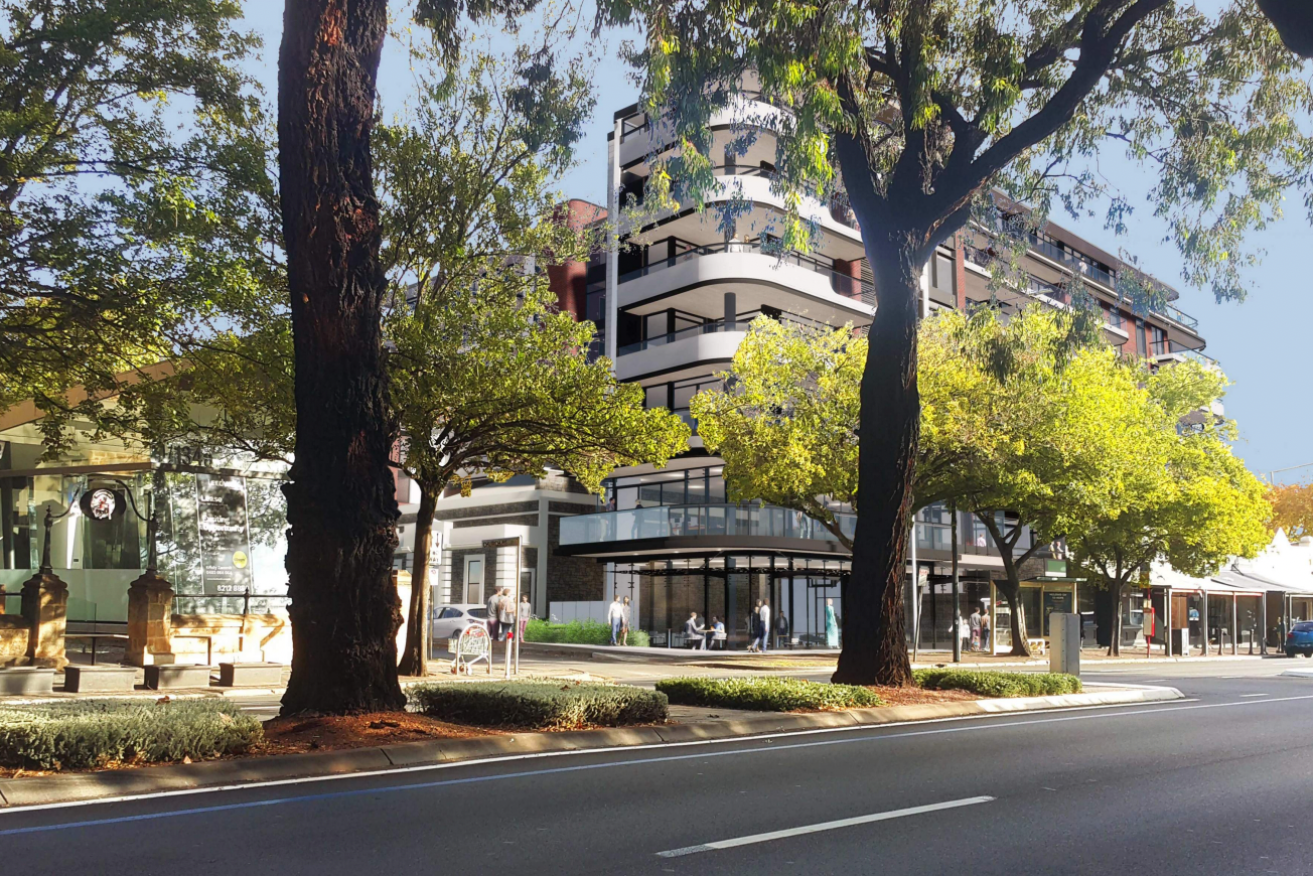‘Visual relief’: Parade developer told to soften block design
The state’s planning panel has told the developer behind a proposed eight-storey apartment block at Norwood to refine the design to “provide visual relief” from its “mass and bulk” to better suit The Parade’s character.

A render of the eight-storey apartment block proposed to be built on The Parade. Image: Cheesman Architects/Australasian Property Developments
The State Commission Assessment Panel (SCAP) yesterday deferred making a decision on a development application lodged by 120 The Parade Pty Ltd to build 69 apartments, four shops and two offices opposite the historic Norwood Hotel on the southwestern corner of The Parade and Church Avenue.
The panel told the developer to make four changes, including “design refinements which provide visual relief from the proposed building’s mass and bulk such that the development more appropriately complements and responds to the fine grain main street character”.
InDaily reported on Tuesday that the Planning Department recommended that the SCAP grant the application planning consent with several conditions, despite noting “tension” regarding a policy that allows the development to exceed the area’s usual six-storey height limit.
A department report stated the development was “generally considered consistent with the policy framework” and achieved “good design outcomes” because it sought to restore and repurpose heritage buildings.
The developer argued it should be allowed to exceed the six-storey height limit for the area, as the site is considered “significant”, meaning it can exceed the normal height limit by 30 per cent.
But the council and some Norwood residents claimed the proposed building was “excessive” and would detract from the amenity of The Parade.

A view of the development site. Photo: Tony Lewis/InDaily

A render of the eight-storey apartment block proposed to be built on The Parade. Image: Cheesman Architects/Australasian Property Developments
In addition to the design changes, the SCAP told the developer to submit updated plans that show the full extent of overshadowing to the south of the proposed building.
It asked the developer to change the waste area to minimise impacts on the nearby residential area and to provide details on the proposed conservation works to the four local heritage-listed shopfronts, behind which the building is proposed to be built.
In a submission to the SCAP ahead of yesterday’s meeting, Norwood Payneham and St Peters Council urban planning and environment general manager Carlos Buzzetti wrote the bulk and scale of the development “completely ignores its context”.
“There is nothing of the proposed scale in a single building anywhere near this site in Norwood,” he wrote.
“(It) will lead to a development that will ‘loom large’ within its main street setting and detract from, rather than enhance, the amenity of the locality.”
Twenty-four Norwood residents wrote to the SCAP expressing their views, with the majority saying they were concerned about the proposed building’s size and the potential for it to overlook neighbouring properties.
“People enjoy living here for the cozy lifestyle, as well as the character of the suburb – this completely takes away from all of that,” one resident wrote.
Three members of the public made representations at Wednesday’s SCAP meeting.
The panel also heard from Government Architect Kirsteen Mackay, who in her written submission to the SCAP raised concerns about the proposed building’s mass and its impact on the heritage buildings.
Peter Zollo, from 120 The Parade Pty Ltd, as well as Cheesman Architects and planning company Masterplan also attended yesterday’s meeting.
In a written submission to the SCAP ahead of the meeting, Masterplan said it disagreed that the proposed building was excessive and that the designers had refined the plans to address the Mackay’s concerns.
“The site is large through the assembly of a number of contiguous allotments,” planner Graham Burns wrote.
“It also has an expansive frontage to The Parade and Church Avenue.
“We believe that the facades visible to these roads, and indeed all visible elevations, are interesting, varied and articulated.”




